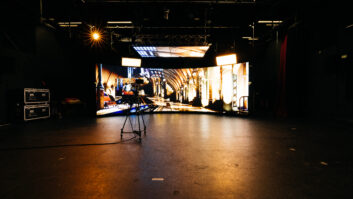Acoustics is perhaps the most neglected aspect of pro audio – particularly in unified communications. Budgetary constraints often mean that integrators and their clients don’t instruct dedicated acoustical consultants, either choosing to do the work themselves or ignoring it completely. This is a mistake.
Acoustics is hugely important. Yes, it takes effort and understanding – particularly when it comes to architectural and construction issues in modern working environment room design – but the rewards of getting the best acoustics are worth all the effort and expense, even if room aesthetics have to be compromised for physics.
Yes, today’s microphones and digital sound processing can cover over some acoustical cracks. According to AV consultant Emma Bigg, director of Octavius RE: “Meyer Constellation in Bloomberg HQ is an example of where acoustics were so important they used advanced processing technology to fake it.”
“The better that rooms are treated acoustically, the easier it is to get the system integration right”
Broader selection
However, the better that rooms are treated acoustically, the easier it is to get the system integration right, with a broader selection of audio solutions available. These modern-day audio bells and whistles are even more effective if a room’s acoustics are right in the first place.
It’s true that audio algorithms can be employed to mitigate background noise on conference calls, but further improvements can be made if a room’s acoustics are optimised first. With background noise creating significant, ongoing distractions within meeting spaces – for both in-room and remote participants – acoustics are all-important.
Today’s open plan or flexible working spaces continue to acoustically challenge end users, designers, architects and consultants. However, the growth in popularity of enclosed huddle spaces present their own acoustic challenges. Often designed with highly reflective surfaces such as glass, the eradication of sound echoes and background noises is key. Here technology probably trumps acoustic treatments – unless treatments are applied at the design stage of the huddle space.
“In the modern office environments, we often see huddle spaces that are enclosed in highly reflective surfaces such as glass which still require advanced signal processing to address,” Shaun Robinson, VP of customers solutions, Harman Professional Solutions, told me.
Audio push
The rise in remote working and expansion in global comms has, of course, added to the push for better audio in corporate environments. There’s now an inherent understanding that good microphones, good speaker system design and good acoustics play an important part – although the latter remains a neglected area, for reasons discussed.
“Collaboration technology makes it possible to connect a global workforce in today’s workplace. Audio is an essential part of that exchange. When the spoken word is intelligible and coverage is uniform, meeting participants remain engaged from wherever they are located,” explained Marc Happes, product manager for conferencing and unified communications at Bose Professional.
But when it comes to acoustics, it doesn’t matter whether comms are remote or localised: the issues are all very similar. According to acoustics expert Chris Adair, of Adair Acoustics, the main problem is that designing a good acoustic in a relatively small room requires a whole different set of priorities. “Rooms often look fantastic – particularly in today’s corporations – but these rooms often have such poor acoustics that even two people speaking at once creates a problem, and videoconferencing can become a nightmare.”
Larger, open plan office spaces and restaurants offer different challenges, of course, with the visual and practical needs – and, often, reflective surfaces – restricting acoustic treatment choices. “There are many good products that look great and are practical,” said Adair. “An example is the Artnovian range of products, many boasting a real wood veneered finish: robust and gorgeous looks too.”
Crucially, according to Adair, you cannot transform a room’s acoustics with a small amount of acoustic treatment – it will take up space, usually 10-20% of surfaces. This is perhaps another reason, alongside cost, why acoustics is pushed to the back of the audio queue when it should be at the front. However, treatments don’t have to be ugly: there are loads of aesthetically appealing options, and they don’t even have to be obviously acoustic in design.







